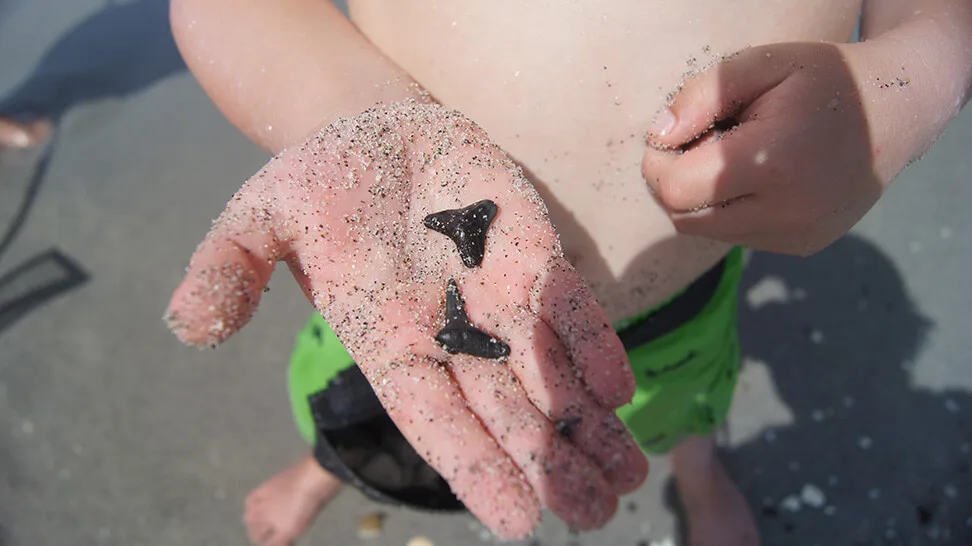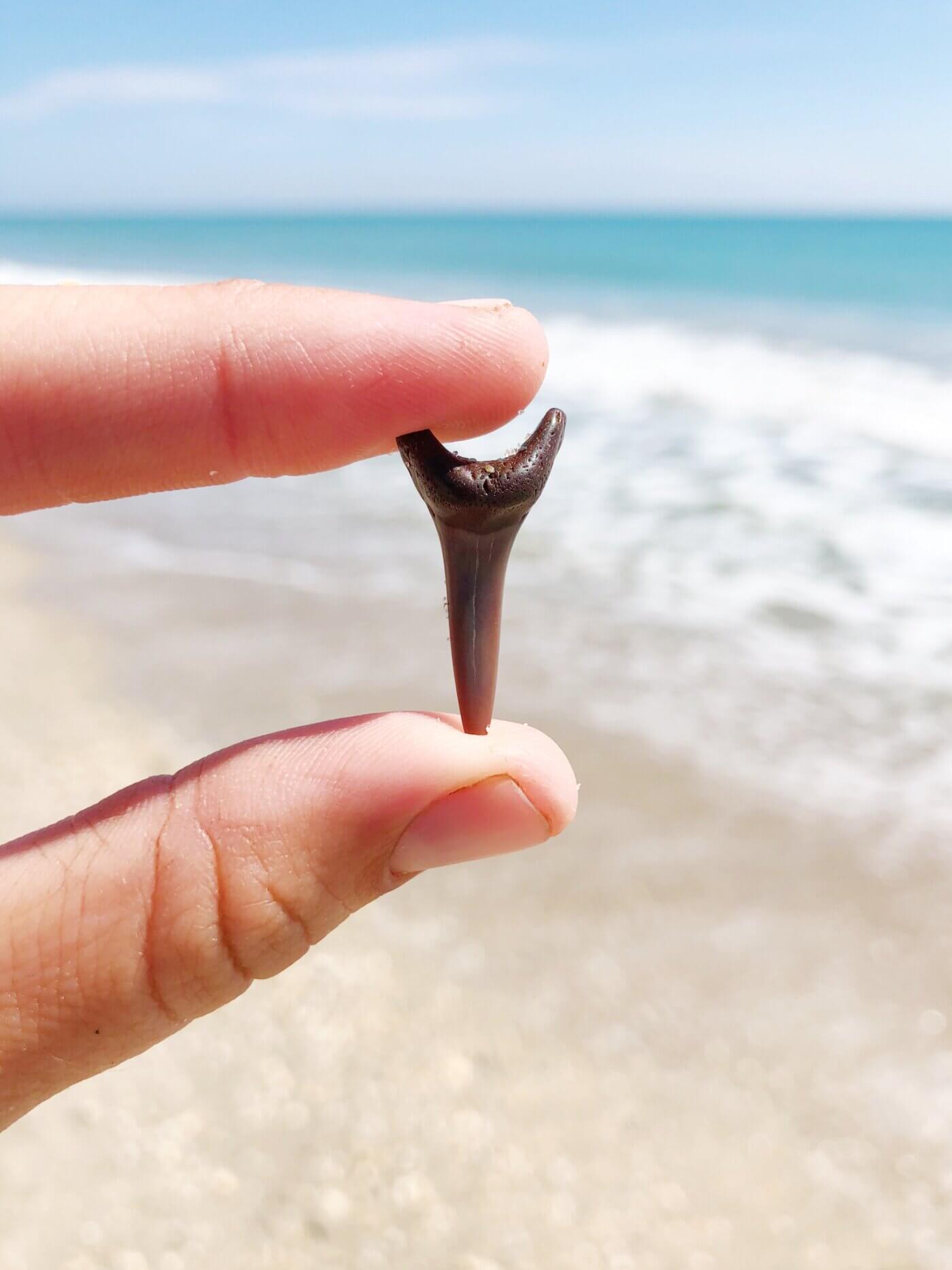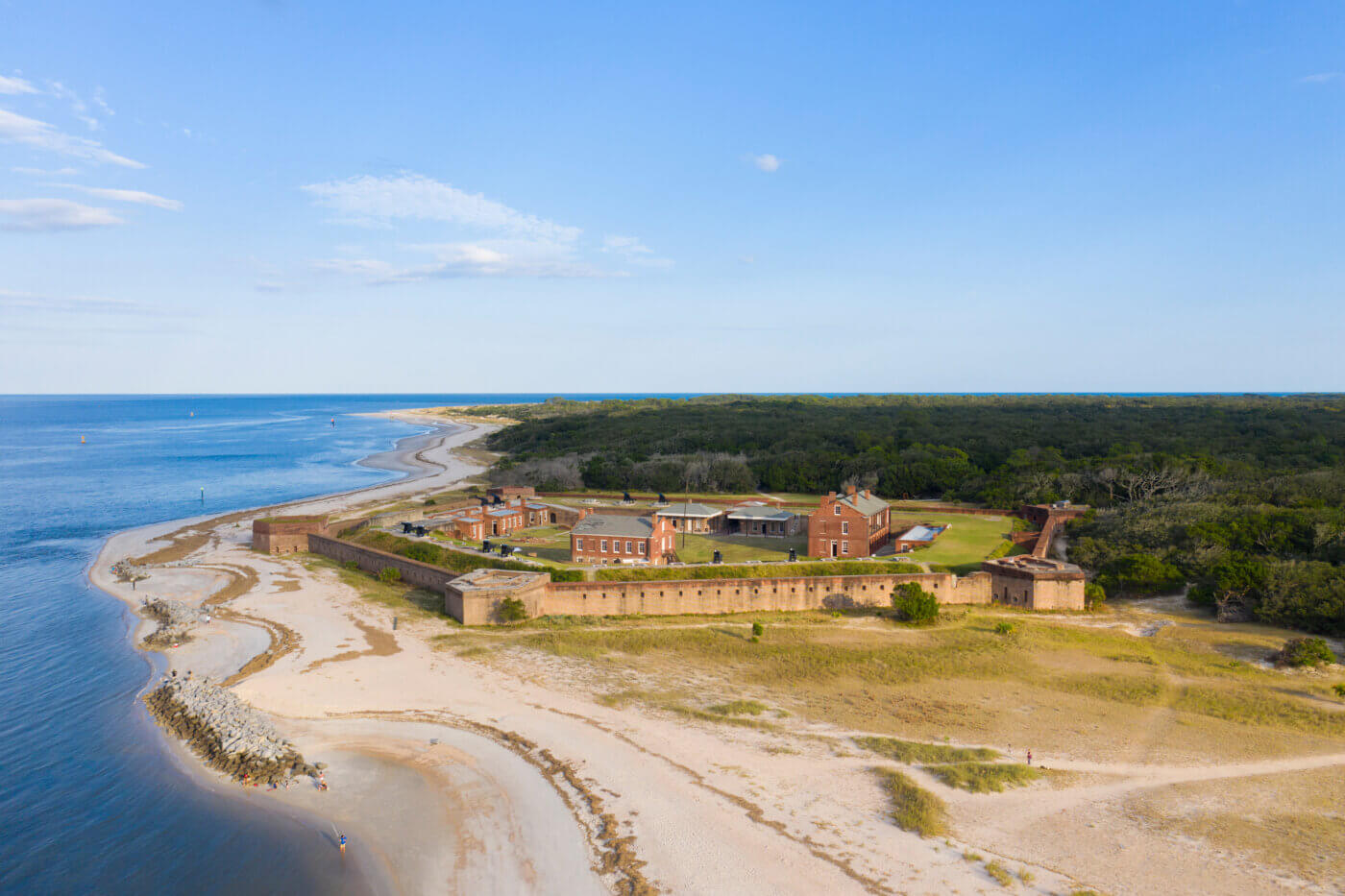
Photo courtesy of VisitSarasota.com
From coast to coast, Florida’s beaches (and one river) are rife with shark teeth to take home and treasure—if you can spot them.
They’re the most abundant vertebrate fossils on the globe, but sometimes, the task of finding one in a pile of seashells can feel like hunting for a needle in a haystack. Shark teeth wash up on Florida’s pair of coastlines with the regularity of the tides, but some beaches—and one river—see vastly larger supplies of these preserved fossils.
Venice, on Florida’s southwest coast between Fort Myers and Sarasota, prides itself on being the “Shark Tooth Capital of the World,” while nearly due east on the Atlantic Coast, Indian River County counts shark teeth among the many treasures that have floated onshore at its beaches. Peace River, which runs from Bartow, just south of Lakeland, to Charlotte Harbor, just north of Fort Myers on the Gulf Coast, is a hotbed for shark tooth fossils, especially during low tides when you can sift through the sandbars.
You’ll always be able to find shark teeth on Florida’s beaches, especially during hurricane season when storms churn up the ocean’s floor, because sharks shed their teeth regularly throughout their lives. Teeth become fossils through a process called permineralization, in which a shed tooth sinks to the seafloor only to be quickly covered by sediment. Water seeps in through the sediment and deposits different minerals into open pores on the teeth. That’s why you’ll find shark teeth that are blue, gray, black, orange, red, white or green depending on the presence of silica, calcite and other minerals.
Marine biologists say it’s not always easy to pinpoint which species lost the tooth, but there are some clues. Does the tooth have serrated edges for sawing? It might be from a bull shark, a species found in saltwater, fresh, and brackish waters along Indian River County’s coastline. Shark teeth can also look like piercing, needle-like points, hooked shapes or dense, flat surfaces used to grind up shelled prey.
You may even see a modern shark tooth wash up on shore—both the crown and the root will appear white in color, as they haven’t been permineralized. If it’s a river you’re finding shark teeth in, it’s more than likely a fossil, due to the distance from the ocean.
Here are six places across Florida where you can best enjoy the hunt for unique, multicolored shark teeth you can take home and treasure forever:
Caspersen Beach

At low tide, the warm Gulf waters at Venice’s Caspersen Beach recede to reveal a treasure trove of seashells and shark tooth fossils. Visit local souvenir shop Shark Frenzy to pick up a shark tooth sifter tool, or if it’s massive fossils you’re after, a number of local companies in Venice charter boat trips and scuba diving excursions into deeper, offshore waters. After you’ve collected your treasures, explore the area’s coastal hammock, tidal flat, mangrove, and saltwater and freshwater marsh habitats, most of which grow wild without human interference.
Peace River

The Peace River runs 106 miles from an origin near Bartow through Polk County into the Charlotte Harbor estuary in Punta Gorda on Florida’s southwestern coastline. No matter what stretch of river you visit, if the water level is low and sandbars are exposed, you’ll likely spot prehistoric sharks’ teeth sitting right on top of the sand. Shark teeth recovered in the Peace River by paleontologists date back more than 2 million years to the Ice Age. The Peace River has even produced fossilized teeth from a megalodon, a prehistoric shark that may have measured 60 feet long and weighed up to 50 tons.
Casey Key

Between Sarasota and Venice near Nokomis lies a barrier island where you can hunt for sharks’ teeth in serene, often unpopulated surroundings. Casey Key isn’t home to any large hotels or tourist trappings, so you’re free to sift for fossils for as long as you’d like. Grab a sifter from Nokomis Beach Bait and Tackle and head just one or two feet into the water until you reach the drop-off—here, the ocean deepens and sediments are in movement, releasing the fossilized shark teeth from the ocean floor where they were buried.
Golden Sands Beach

On a quiet stretch of Florida’s east coast, Golden Sands Beach in Indian River County is another place you’re likely to find shark teeth washing ashore, especially after a thunderstorm (or worse) has rolled through the area. Golden Sands and nearby beaches along the Treasure Coast are popular nesting areas for many species of endangered sea turtles, so be mindful and keep children away from sea turtle nests, even if they happen to be near large deposits of shells.
Fort Clinch State Park

Located on the northern end of Amelia Island on Florida’s northeasternmost coast, Fort Clinch State Park and the nearby Cumberland Island National Seashore are rife with fossilized shark teeth because of engineers’ periodic dredging of the nearby Cumberland Sound, an active channel along a commercial shipping route. When the sound is dredged, the floor of the Amelia River ends up washing ashore at Fort Clinch, full of ancient treasures like shark teeth.
Manasota Key

A few miles south of Venice’s bustling beaches, Manasota Key is a barrier island chock full of secluded beaches to try your hand at hunting for shark teeth. Stump Pass Beach Park is favored by locals and visitors alike for its bountiful opportunities for shelling and shark teeth hunting, especially during the winter months. Traverse its powdery, white sands as you look for fossils, but don’t forget to look around you—the area is a habitat for West Indian manatees, snowy egrets, and gopher tortoises.
READ MORE: 4 Family-Friendly Florida Vacation Spots to Visit on a Budget
Politics

Video: Biden Administration Sets First-Ever Limits on ‘Forever Chemicals’ in Drinking Water



Navigating voter registration in Florida: What you need to know
An estimated 36.2 million Latinos are eligible to vote this year. That’s up from the 32.3 million that voted in 2020. This represents 50% of the...
Local News



Video: Biden Administration Sets First-Ever Limits on ‘Forever Chemicals’ in Drinking Water



Navigating voter registration in Florida: What you need to know
An estimated 36.2 million Latinos are eligible to vote this year. That’s up from the 32.3 million that voted in 2020. This represents 50% of the...





